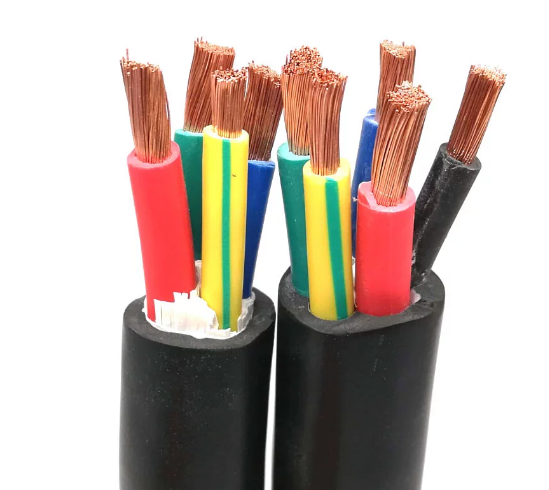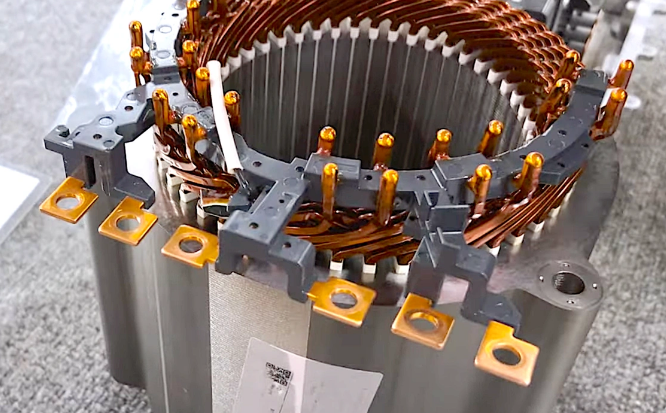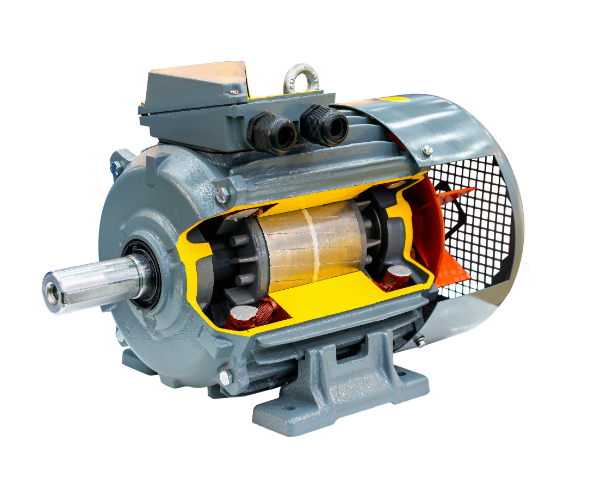Three-phase motors are more efficient in production and also have a longer service life. The operating efficiency averages 90% and above, with maintenance intervals reaching up to 20,000 hours. Energy consumption is cut by 15%, translating to about 30% savings in yearly electricity bills.
Enhancing Equipment Operational Efficiency
The improvement of equipment efficiency yields substantial benefits in manufacturing. Due to their construction, three-phase motors have the advantage of higher efficiency at the same power level. For instance, a three-phase 15 kW-rated motor typically reaches an efficiency above 90%, whereas its single-phase equivalent, under the same operating conditions, will usually be below 85% efficient. This means that, in the long run, three-phase motors can significantly reduce electricity costs by saving 5-10% on electricity bills annually, which is a considerable economy for manufacturing companies with high energy consumption.
Three-phase motors also have higher starting torque that allows the equipment to reach its operational state more quickly. For example, on a production line where a three-phase motor is used to drive the conveyor belt, the startup time is reduced by about 20-30%, thus directly improving production efficiency. Single-phase motors have lower starting torque and usually take longer to start up, which is less flexible for production environments needing a high frequency of starts and stops. Equipment driven by three-phase motors has a failure rate at least 15% lower than those using single-phase motors. This could translate to reducing unplanned downtime maintenance by two to three times a year, which reduces both maintenance costs and the losses brought on by production stoppages. Such improvements are crucial for manufacturing plants operating under high intensity and frequency.

Reducing Equipment Maintenance Costs
One of the most important reasons why manufacturing enterprises adopt three-phase motors is that they reduce equipment maintenance costs. The structure of three-phase motors is more robust, and the fitting of rotors and stators has higher precision, thus reducing wear and tear on bearings and gears. Market research shows that the average maintenance cycle for a three-phase motor is over 20,000 hours, while single-phase motors normally range between 10,000 and 15,000 hours. This means that companies in the industry will save over 30% of annual maintenance expenses by using three-phase motors.
Three-phase motors have better heat dissipation, effectively avoiding overheating damage to the motor. An electronics manufacturing plant in Zhejiang that adopted three-phase motors reduced stoppages due to overheating by more than 50%, greatly reducing both repair costs and production losses. Due to more stable temperature control, insulation materials inside the motor can last longer, so the average lifespan of a three-phase motor can reach 15-20 years, far longer than the 10-12 year life cycle of single-phase motors. Three-phase motors have a lower starting current, which minimizes the impact on the power grid, preventing current fluctuations that might result in equipment failures. Based on data from an industrial equipment maintenance company, three-phase motors reduced electrical failure rates by 25% in factories where they were used, leading to a significant reduction in the frequency of equipment repairs and maintenance costs.
Long-Term High-Efficiency Operation
Therefore, owing to their stability and efficiency, three-phase motors can withstand long-term high-load industrial operation. Statistics show that over 5,000 hours of continuous full-load operation, the efficiency of a 30 kW-rated three-phase motor can be maintained above 92%, while that of a single-phase motor will gradually decrease to around 85%. This high-efficiency performance can guarantee that the production line keeps running continuously and stably, effectively reducing energy consumption. Three-phase motors use high-strength materials and advanced cooling systems, allowing them to run for extended periods under high temperatures and high pressure in severe working conditions. In steel smelting, motors need to work under conditions of high temperature and heavy dust. Ordinary motors may stop working due to overheating, but three-phase motors have efficient cooling systems that keep internal temperatures within safe limits, avoiding production losses due to shutdowns.
Three-phase motors increase output power without increasing the size of the equipment, owing to their high power density and better power factor. A machinery manufacturing company in Shandong replaced all single-phase motors with three-phase motors. Without changing the layout, hourly production efficiency improved by 15%, while equipment failure rates decreased by 30%. The company thus saved a lot through reduced maintenance fees and losses caused by downtime. Maintaining long-term high-efficiency operation makes three-phase motors the perfect choice for many manufacturing companies that utilize continuous 24-hour production. After adopting three-phase motors, an electronics manufacturing plant saw the output of the whole production line increase by 20%, bringing about an additional annual output value of about 2 million RMB. This stable power output not only ensures the continuous operation of the equipment but also enables the enterprise to respond more effectively when faced with an increase in order volume.








